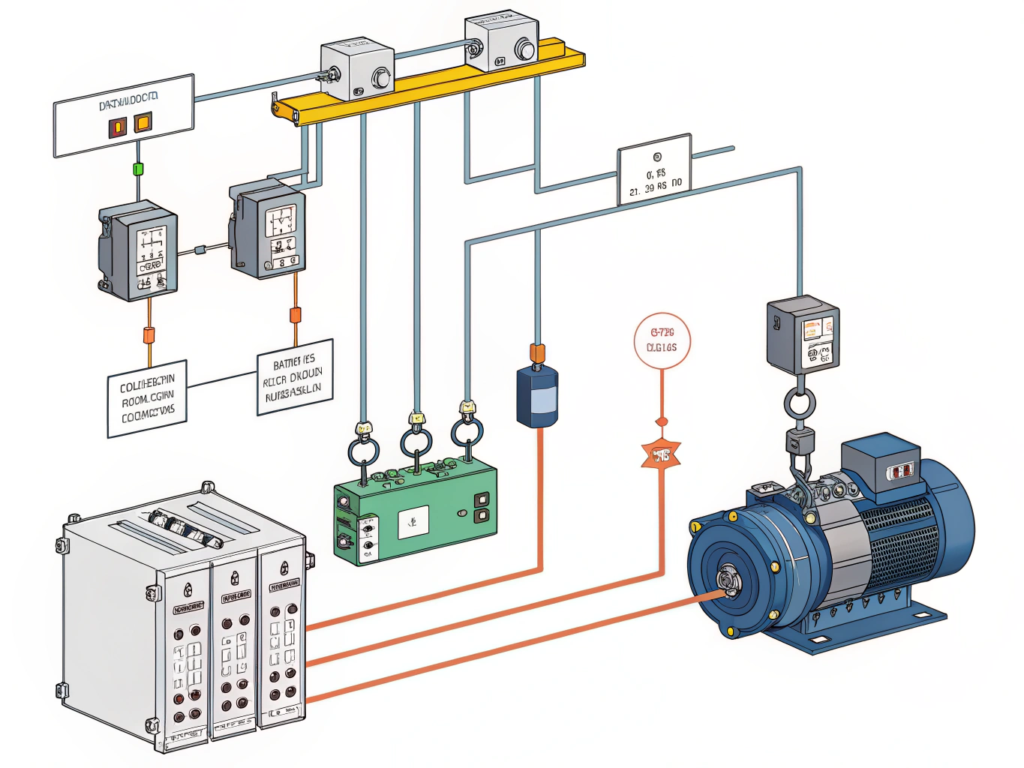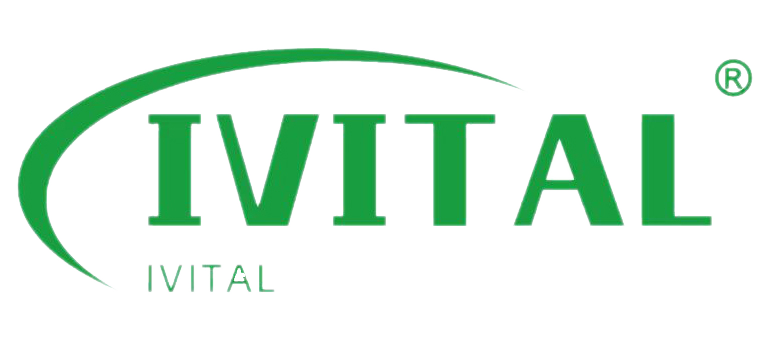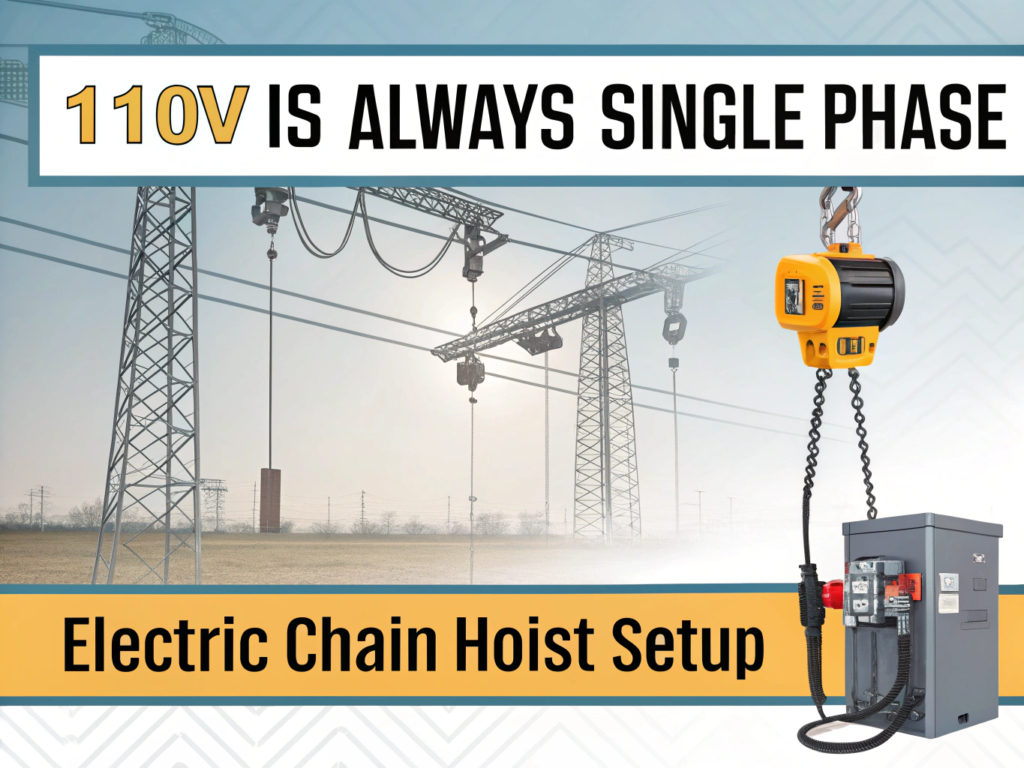Sometimes 110V looks like the easy choice, but is it always single phase?
110V is commonly single phase in the U.S., but not always. That’s why understanding voltage and phase compatibility is critical when selecting an electric chain hoist.
I learned this lesson firsthand while sourcing hoists for a facility retrofit—what looked simple on paper turned into hours of rework due to a phase mismatch.
[Table of contents]
- What is the voltage of a hoist?
- Are all 110V hoists single phase?
- What are the power options for electric chain hoists?
- What happens if you mismatch hoist voltage and phase?
- Conclusion
What is the voltage of a hoist?
Hoists can operate on different voltages depending on the region and power system.
Most hoist motors in the U.S. run on 110V or 220V, but their control systems usually step down to 24V or 120V for safety.

Dive Deeper
In North America, the standard single-phase voltage from an outlet is typically 110V–120V. But what you see on the plug isn’t always what the motor needs internally.
Many hoists step down their control voltage to make operation safer. That’s why product datasheets often show two numbers—line voltage and control voltage.
| Voltage Type | Purpose |
|---|---|
| 110V–120V | Main power supply |
| 24V / 120V | Control circuit voltage |
One time, I installed a 110V hoist with a remote pendant, only to find that the internal wiring ran 24V for control. That info was buried in a PDF I almost skipped. Big mistake.
Are all 110V hoists single phase?
This is the big question—and the answer’s not always yes.
Most 110V hoists are single phase, but it’s not a guarantee. Always check the motor label or spec sheet.
Dive Deeper
110V is typically associated with single-phase power, especially in household and light commercial settings. But there are exceptions.
Some hoists use a Variable Frequency Drive (VFD) that converts 110V single phase into 3-phase internally. Others may be designed for specific international wiring setups.
| Hoist Type | 110V Compatible | Single Phase |
|---|---|---|
| Standard U.S. hoist | ✅ | ✅ |
| VFD-based 3-phase hoist | ✅ (converted) | ❌ |
| Imported hoists (Europe) | ✅ | Depends |
I’ve seen 110V hoists from overseas that required a three-phase power tap. It looked right at first—but the hoist stalled under load and tripped breakers. Turns out, the label was misleading.
What are the power options for electric chain hoists?
You’ve got choices—but they come with trade-offs.
Electric chain hoists come in 110V, 220V, 380V, and 400V variants, and can be single-phase or three-phase depending on application.
Dive Deeper
Here’s how I explain it to customers:
- 110V / Single Phase → Good for garages and small shops
- 220V / Single Phase → Medium-load applications in workshops
- 220V / Three Phase → Light industrial
- 380V–400V / Three Phase → Heavy industrial and continuous-duty lifting
| Voltage | Phase | Typical Use Case |
|---|---|---|
| 110V | Single | Home garage, DIY lifts |
| 220V | Single | Small workshops, farm use |
| 220V | Three | Light-duty industrial tasks |
| 380V+ | Three | Manufacturing, 24/7 operation |
For example, IVITAL’s electric hoists are offered in both 110V single-phase and 380V three-phase configurations. The 110V model is perfect for small engine lifts. The 380V model is built for real work—24/7 on the production floor.
What happens if you mismatch hoist voltage and phase?
It’s not just inconvenient—it’s dangerous.
Wrong voltage or phase can damage your hoist, void the warranty, and pose a serious safety hazard.
Dive Deeper
When I helped troubleshoot a warehouse hoist that wouldn’t lift past 30% load, the issue turned out to be a 220V single-phase unit wired to a 3-phase panel. The motor ran—sort of—but overloaded immediately.
⚠️ Common signs of a mismatch:
- Motor humming but not lifting
- Frequent tripping of circuit breakers
- Overheating during basic use
- Burnt wiring or electrical smell
Always check these three things before installation:
- Voltage (e.g., 110V, 220V)
- Phase type (single or three)
- Frequency (50Hz or 60Hz)
Conclusion
110V is usually single phase, but don’t assume—always confirm before you buy or wire.



